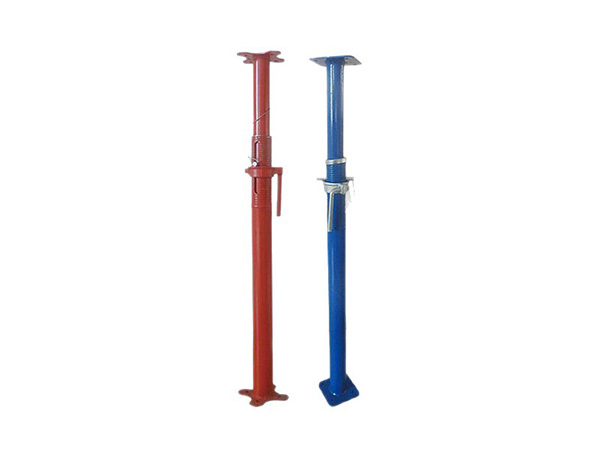- Site Navigation -

Steel Bridge Bracing
The core function of Steel Bridge Bracing is to transmit the vertical load(such as the self-weight of the prefabricated beam,concrete pouring load)and the lateral load(such as later......
The core function of Steel Bridge Bracing is to transmit the vertical load(such as the self-weight of the prefabricated beam,concrete pouring load)and the lateral load(such as lateral earth pressure and wind load)of the bridge structure,so as to ensure the structural stability of the bridge in the construction stage(such as beam body erection,pier construction)and maintenance stage(such as support replacement).Compared with ordinary building steel column supports,it needs to adapt to the characteristics of large spans,heavy loads,and complex working conditions(such as outdoor,wading,and high-altitude)of bridges,and has stricter requirements in terms of material strength,structural design,and anti-corrosion performance,and is the core guarantee component for the safe promotion of bridge projects.From the perspective of core types,Steel Bridge Bracings can be divided into three categories according to"construction scenarios":first,prefabricated beam erection supports,which are used for temporary load-bearing during the hoisting of bridge prefabricated T beams and box girders,mostly using adjustable steel pipe supports(diameterΦ60mm-Φ108mm,material upgraded to Q355B or Q460 steel),single-point load capacity up to 100-300kN,equipped with high-precision thread adjustment structure(adjustment accuracy±1mm),can quickly adapt to different beam bottom elevations,and at the same time equipped with anti-slip base and steel plate spacers at the bottom,Avoid support slippage when the beam body is erected.The second is the cast-in-place beam support support,which is suitable for continuous beams,rigid structure bridges and other cast-in-place construction scenarios,using a combined steel support system(such as disc buckle type and bowl buckle type steel support),which is connected by vertical rods,cross rods,and inclined rods through high-strength fasteners,and the vertical rods are selected with thickened seamless steel pipes(wall thickness 5-8mm),and the spacing between the crossbars is determined according to the load calculation(usually≤1.2m),and the overall can withstand the weight of cast-in-place concrete(about 24kN/m³)and the construction live load,and it is necessary to set up transverse diagonal braces to enhance wind stability.Adapt to the construction needs of large spans(20-50m)of bridges.The third is the pier column and foundation support,which is used for the bridge pier column formwork support and the temporary support of foundation excavation,and the pier column support adopts a combination of ring steel hoop and adjustable diagonal brace(the diagonal brace material is Q355 steel,and the section is angle steel or channel steel),which can resist the lateral pressure(30-60kN/m²)during concrete pouring;The foundation support is mostly a combination of steel sheet piles and steel supports,which are used for slope support during foundation pit excavation,and the steel support is made of H-beam steel(such as H400×400),which is pre-jacked by hydraulic jacks to prevent the foundation pit from collapsing.The key technical requirements for Steel Bridge Bracing are reflected in three aspects:the material needs to meet high strength and toughness,the yield strength of Q355B steel is≥355MPa,and Q355ND low-temperature toughness steel should be selected in low-temperature environments(below-10°C)to avoid low-temperature brittleness;The structural design needs to consider dynamic loads,such as vibration generated by vehicle traffic,support nodes need to be equipped with shock absorbing spacers,and adjustable parts need to be equipped with anti-loosening and locking devices.The anti-corrosion performance needs to be adapted to the complex environment of the bridge,and the outdoor support adopts hot-dip galvanizing(zinc layer thickness≥85μm)+fluorocarbon paint double anti-corrosion,and the wading support needs to be coated with epoxy coal asphalt paint on the surface of the steel component to extend the service life.When using,three points should be noted:first,the load calculation should cover dynamic effects,such as the impact coefficient(usually 1.2)should be considered when lifting prefabricated beams to avoid support overload;second,the installation needs to be strictly controlled accuracy,and the verticality deviation of the vertical rod supported by the cast-in-place beam bracket is≤0.5‰to ensure uniform force;The third is regular monitoring and maintenance,during the construction period,it is necessary to use stress sensors to monitor the support load in real time,and adjust the abnormality in time.








